Singapore launches seamless cross-border payment systems with Malaysia and Indonesia
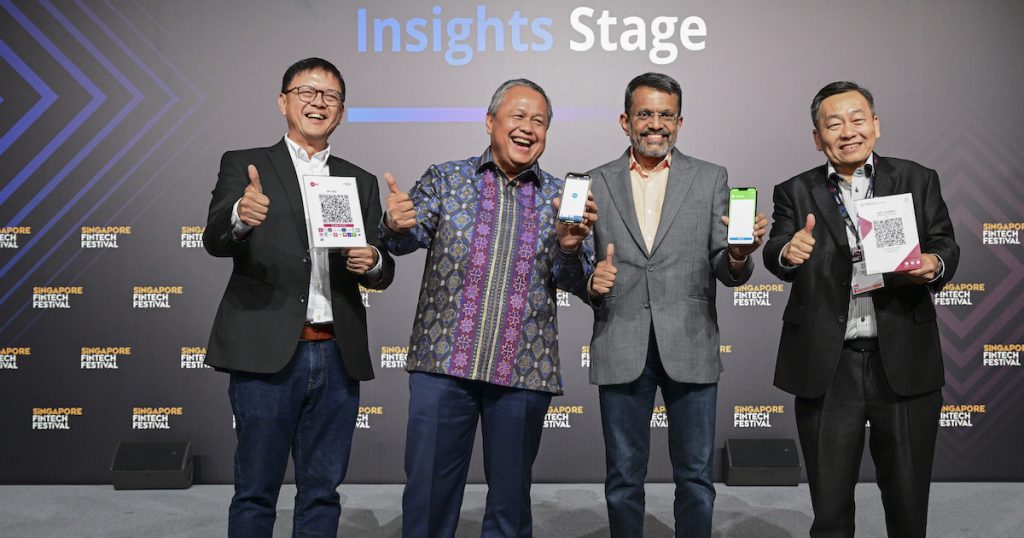
Ever since the pandemic, the demand for digital payments has grown rapidly. Initially, this was spurred by physical distancing rules, which contributed to the growth of online shopping and cashless payments. Since then, however, consumers and merchants alike have grown used to these new means of transaction.
Southeast Asia, in particular, is leading the way for financial digitisation. As it stands, more than 70 per cent of adults in SEA are currently ‘unbanked’ or ‘underbanked’, and digital payments are primed to address the issue of financial inclusion across the region.
SEA’s digital payment market is projected to grow by over 14 per cent annually from 2023 to 2027. In line with this trend, SEA has also become the world’s fastest-growing region for mobile wallets.
The mission for digital finance is being powered by both private institutions and governments. At the Singapore Fintech Festival (SFF) 2023, the Monetary Authority of Singapore (MAS) announced the launch of new cross-border payment systems, allowing seamless transfers between Singapore and Malaysia, and Singapore and Indonesia.
Instant fund transfer between Singapore and Malaysia
Since 2017, Singaporeans have enjoyed the convenience of instant fund transfer through the PayNow service. This requires only the recipient’s phone number and can be used to transfer funds to customers of seven different participating banks.
As of this November, PayNow users will enjoy the same convenience when transferring funds to Malaysia as well. This has been made possible by linking PayNow with DuitNow – a similar payments system which was launched in Malaysia in 2018.
This service will be launched in phases to customers of Liquid Group, Maybank Singapore, OCBC, and UOB in Singapore. These institutions will gradually increase the eligible users until the end of January 2024.
In Malaysia, the service will first be available to customers of CIMB, Maybank, and TNG Digital. There are also plans to onboard more financial institutions after this launch period.
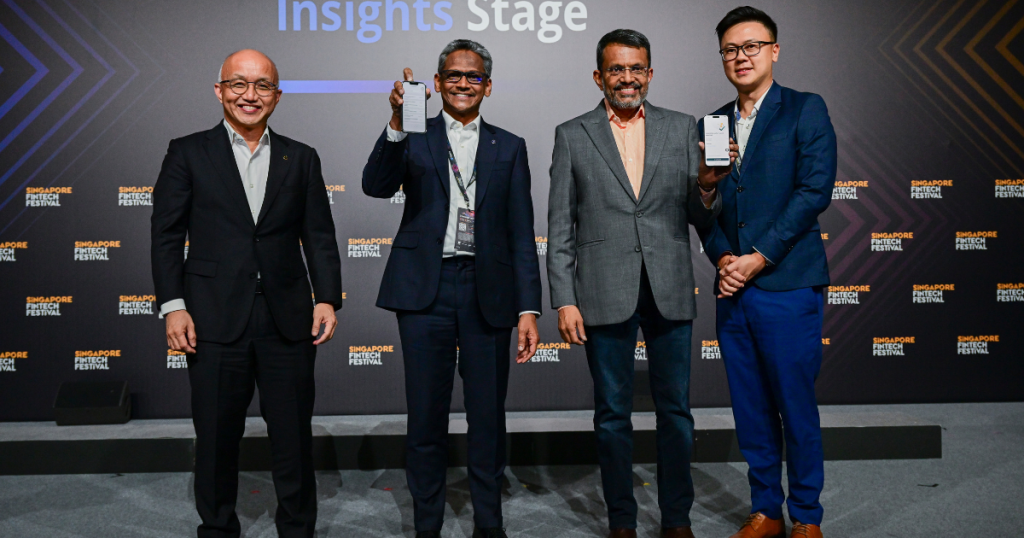
The PayNow-DuitNow linkage is the culmination of a shared aspiration by Singapore and Malaysia to facilitate cross-border payments between the two countries. This linkage represents another step towards ASEAN’s vision for regional payments interconnectivity.
– Ravi Menon, Managing Director, MAS
Users will be able to send or receive up to S$1,000 on a daily basis using this real-time payments system.
Besides being neighbours, Singapore and Malaysia are among each other’s largest trade partners. As Ghaffour mentioned in his remarks at the launch, Singaporeans used to visit Malaysia twice-a-year on average prior to the pandemic.
With borders open again and travel picking up, this payments system will play a key role in strengthening ties between the two countries. For individuals and enterprises alike, the barriers for remittance and payments are now lower than they have ever been.
Cross-border QR payments between Singapore and Indonesia
QR payments have become a popular way for merchants – especially small businesses – to go digital and join the cashless revolution. Unlike card-based systems, they don’t require an investment in a point-of-sale terminal (POS), nor do they come with high transaction costs. This convenience extends to consumers too, who can pay using just the banking app on their smartphone.
At SFF 2023, the MAS and Bank Indonesia (BI) launched cross-border QR payment linkage between Indonesia and Singapore. Going forward, the millions of visitors who travel from Singapore to Indonesia – and vice versa – each year, will be able to make QR payments across borders as well.
This initiative reduces the need for currency conversion and makes the payment process a lot simpler. For merchants, a larger customer base can now purchase their products and services using existing QRIS and NETS QR codes.
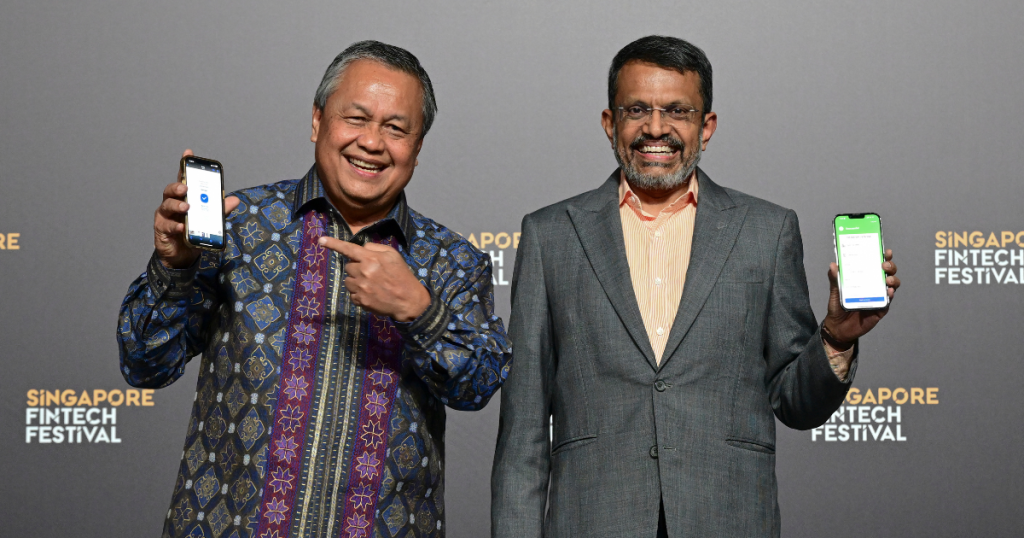
The QRIS-NETS QR payment linkage will promote cross-border e-commerce activities and tourism spending across Singapore and Indonesia, by individuals and small businesses.
– Ravi Menon, Managing Director, MAS
Along with this launch, MAS and BI have also signed a letter of intent to establish a local currency settlement framework, which will come into effect in 2024. “This will complement this payment linkage by facilitating the use of Indonesia Rupiah and Singapore Dollar for the settlement of cross-border payments,” says Menon.
As a result, businesses will be able to reduce their exposure to exchange rate fluctuations and risks.
In his remarks at the launch ceremony, BI Governor Perry Warjiyo stressed the importance of collaboration in improving payment connectivity across SEA. This particular project was implemented successfully through the efforts of not only BI and MAS, but the Indonesian Payment System Association (ASPI), RAJA (Rintis, Artajasa, Jalin, and Alto), Network for Electronic Transfers (NETS) and participating financial institutions.
“These initiatives mark another milestone for Singapore’s growing cross-border payments linkages with key regional economies,” Menon concluded.
Featured Image Credit: Singapore Fintech Festival 2023
Also Read: “Cryptocurrencies have failed the test of digital money”: MAS’ MD Ravi Menon on the future of fintech
From local to global: Startup execs share insights on international expansion and innovation
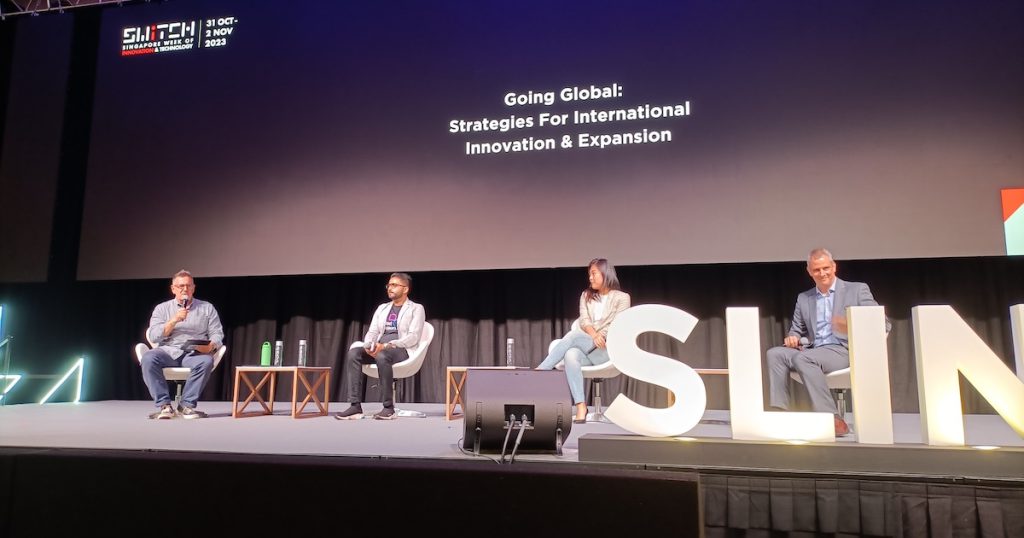
Singapore has been establishing itself as a startup hub by fostering a conducive environment through various organisations, hosting events, and providing resources to local startups aiming for accelerated growth. An example of such initiatives is the annual Singapore Week of Innovation and Technology (SWITCH 2023).
At SWITCH 2023, business leaders from Singapore-based startups took part in a panel discussion earlier this month (November 1). In this session, they shared valuable insights into the strategies for navigating and expanding into international markets.
Factors to consider in your next expansion plan
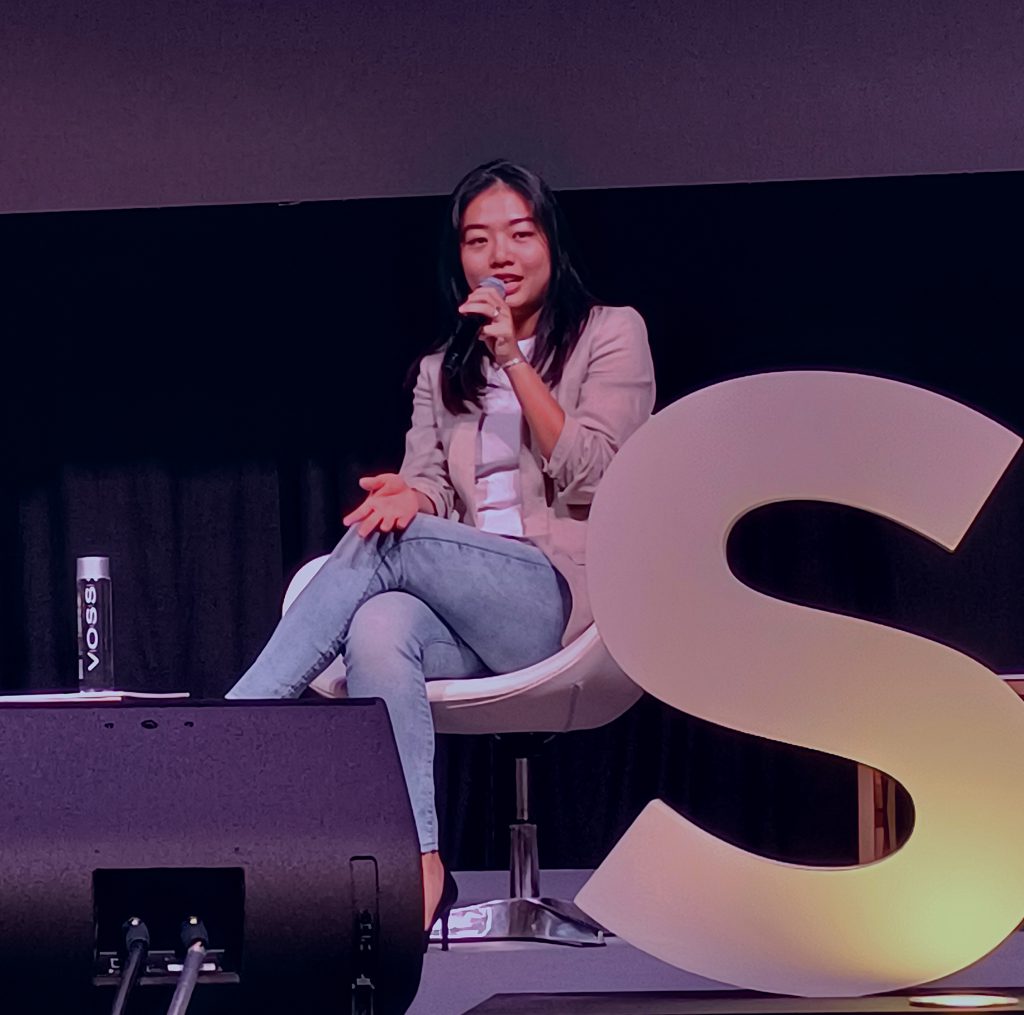
If you were to ask any startup what is the ultimate goal for their business, they all share the same sentiment: going global. Many startups have expanded internationally over the past few years, but only a few have achieved tremendous results.
But before a startup can enter a new market, founders have to start planning for expansion the moment they incorporate the company — a move that Singapore startup Accredify stood by to ensure a smooth expansion overseas.
Tan Jing Yi, Chief Operating Officer (COO) of Accredify explained that she and other key figures in the organisation believed in the value of their Trust Technology solutions. “It should not be limited by industry or geography,” she added.
The process of breaking through a new market is often described as tedious, where founders will need to critical of their expansion plans due to the high costs that comes with expansion. This is because many startups are often strapped in terms of resources, and according to Tan, experience the pressure of “making every dollar become two or three dollars.”
She also highlighted that as a trust tech startup, technological readiness is another essential metric to consider as founders need to determine if their solution would be more cost-effective and can potentially replace manpower costs.
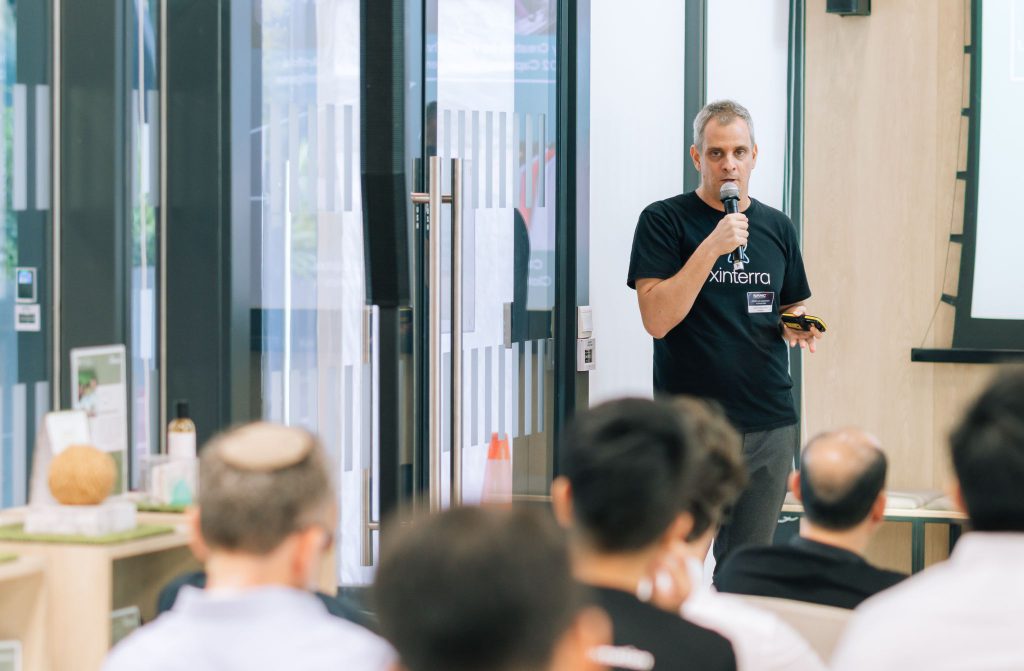
Patrick Teyssonneyre, co-founder and Chief Executive Officer (CEO) of Xinterra, an AI and sustainability-driven textile company based in Singapore, added that it is critical for a company to ensure that there is a product market fit.
He shared that founders should not only know the company inside and out, they also need to establish a demand for their products in these markets before deciding their next destination.
Firstly, we need to generate revenue from that country — from customers in that country. Once we have that minimum amount of revenue and [have] established a product market fit, now it is time to have some thing physically running in that country.
– Patrick Teyssonneyre, co-founder and CEO of Xinterra
Timezones is a factor that also needs to be reconsidered when planning to expand, and Teyssonneyre suggests a maximum time difference of three hours to ensure continuity and efficiency in both offices.
Resisting the temptation to over-expand
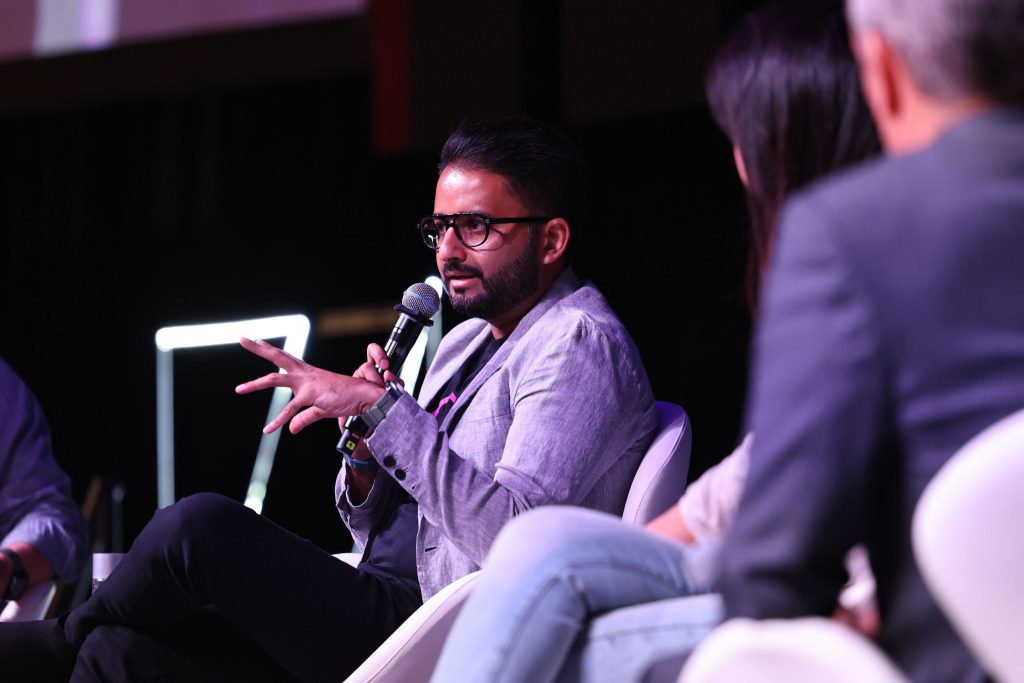
On the other hand, there are some startups that made the costly mistake of over-expanding, which could result in a massive loss of capital if finances are not managed properly.
Singapore-based B2B startup NextBillion.ai have entered many countries and regions, including Europe, China and the United States. While Ajay Bulusu, co-founder and COO of NextBillion.ai was quick to admit that they should not have expanded whilst building on their products, he shared that he was able to find out which markets were receptive of his products.
Eventually you have to do this and burn your fingers to know what is working. You have to throw some spaghetti at the wall — we threw some spaghetti and what stuck was [the] US and India [markets].
– Ajay Bulusu, co-founder and COO of NextBillion.ai
Tan chimed in to say that while that she too hopes that Accredify can achieve groundbreaking results, she pointed out that many startups become overzealous in their expansion plans which burns them out down the road.
You always want to dream big, you always want to conquer the world. I fully agree, but I think it’s important to take each step as as they come instead of thinking ‘I’m gonna conquer everything right now.’
– Tan Jing Yi, COO of Accredify
Teyssonneyre pointed out that while many countries are trying to attract international businesses to establish offices through incentives, startups need to determine their priorities before entering a new market to ensure long-term sustainability of their business.
Leveraging on resources and maximising networking opportunities
Planning to expand your business is never easy, as the process is often described as tedious and complex.
Bulusu shared that expanding overseas was not without its obstacles — hiring local talent being his biggest challenge. “When you go into a brand new country, why would top talent want to work for you where there are already established companies set up by locals?” he questioned.
For Bulusu, he was able to seek support in hiring when he attended a programme held by the Global Innovation Alliance (GIA), a network of Singapore and overseas partners in major innovation hubs and key demand markets, with a focus on technology and innovation. In particular, the programme he attended helped him hire engineers in Singapore, which eventually allowed him to establish an R&D lab in Singapore.
He added that he had to navigate the language barrier when he entered certain countries. Hence, finding and establishing trust with the right partner is extremely important to ensure success in a new market.
Setting up an international branch also meant another round of paperwork. Tan shared that Accredify experienced delays in their expansion as it was challenging to navigate the local regulations and legalities. This resulted in a lot of time spent on finding the right lawyer to facilitate the process, which included crafting contracts in the country’s language.
Tan shared that not only were they able to connect with a dependable lawyer, but they were also able to dissect the intricacies in the government regulations through participating in a acceleration program for startups. She added that having dependable team members can help founders to navigate the continuous changes in the startup scene.
Economies change, political situations change, product change, technology change. But if you have the right people next to you, working with you together to solve problems as they come, you have one less thing to worry about everyday and that is the most important.
– Tan Jing Yi, COO of Accredify
Teyssonneyre followed up by saying that he was able to connect with many startup founders through the networking programmes he attended, adding that he came to learn about other resources and support for startups.
Belusu and Tan echoed similar sentiments, encouraging the audience which included startup founders, to be proactive in looking for opportunities and resources to accelerate their business. “Just ask. Someone will tell you which is the right direction to go,” urged Tan.
ANEXT Bank, a Singapore-based digital bank regulated by MAS, empowers startups with easy and accessible financing to fuel their business growth and expansion.
Featured Image Credit: Vulcan Post
Also Read: What does it take to be in the top 1%? Peak XV’s MD on building a multi-generational company
The Sony Inzone Buds offer gamers 12 hours of playback time & better comfort, so what?

Earlier this year, I bought the Sony WH-1000XM5 wireless headphones to level up my gaming experience.
Unfortunately, I’ve not used it very much since then, because it usually starts feeling too heavy a few hours into use, hurting the top of my head. (When I first reviewed them, I apparently didn’t feel that way, so maybe my scalp sensitivity changed?)
It’s really a pity, because I adore the audio quality.
So could my alternative be the Sony Inzone Buds instead?
Aesthetics
The white variant we got is neither discreet nor loud, and it certainly resembles the PlayStation 5 in design. The black variant is for those who want a sleeker look.
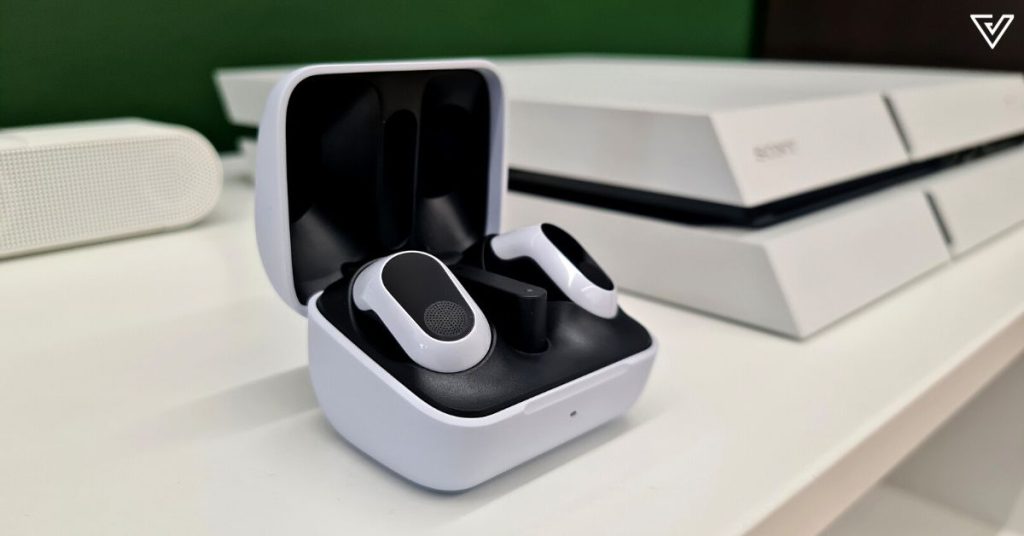
The casing is on the larger end which will make it stick out in pockets, but the pro is that it has great stability.
Inside the case, you get the earbuds and a USB-C dongle to connect to your device. The set comes with three other earbud tip sizes and a… very short charging wire. Thankfully, it seems that any other USB-C charging wire will also work.
Although each bud weighs 6.5g, which is heavier than other earbuds I’ve used in the past, my ears don’t feel fatigued when I wear them for hours on end.
The default ear tips on the Inzone Buds fit my ears nicely, with no sound leakage even on high volume.
Audio
When it came to audio, Sony’s excellence in the field was made clear once again. I couldn’t find anything to complain about.
The ANC throws me into a void where it’s just me and my music or game, and I love that. It’s definitely intense for those who aren’t used to or enjoy strong ANC.
However, if you use very clacky keyboards like me, you will still hear them come through slightly. I could also hear the low hum of my laptop fan working overtime while gaming, but it’s definitely less of a distraction with the ANC on.
The audio itself was rich, warm, and sufficiently bassy when it came to music or games.

I don’t play first-person shooter games so I can’t speak for the efficiency of the 360 Spatial Sound feature for detecting opponents, but every layer of sound in the role-playing games I play was crisp and clear.
The Inzone Buds’ dongle enables latency of less than 30 m/s, so every action you make in games feels very responsive.
On the other hand, the microphone was “just okay” according to everyone who had a call with me while I used the earbuds.
Connectivity
The dongle enables easy connection to mobile devices, PC, and PS5, which I really liked. It’s much faster than Bluetooth pairing, although the Inzone Buds do support LE Audio (not Bluetooth Classic) too.
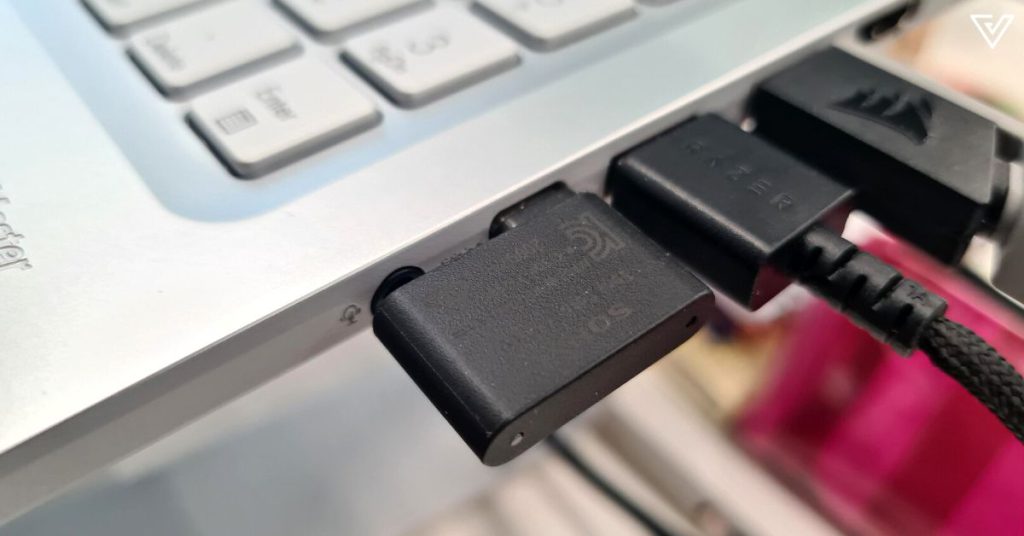
I did try connecting to my Samsung S20 via Bluetooth, which wasn’t too difficult. But the problem came when I wanted to return to a dongle connection, because for the life of me, I simply couldn’t figure out how to.
Even when I turned off my device’s Bluetooth, the right earbud (and just the right earbud) would remain in Bluetooth mode, and it simply refused to disconnect. Meanwhile, the left earbud connected via the dongle as usual.
I had to do a whole reset on the earbuds in order to connect just via dongle.
But I had my gripes with the dongle too. On the laptops I use, the only USB-C port is on the right edge, and is typically next to other USB ports.
Meaning, if I were to use the dongle the “right” side up, it would block access to the other port.
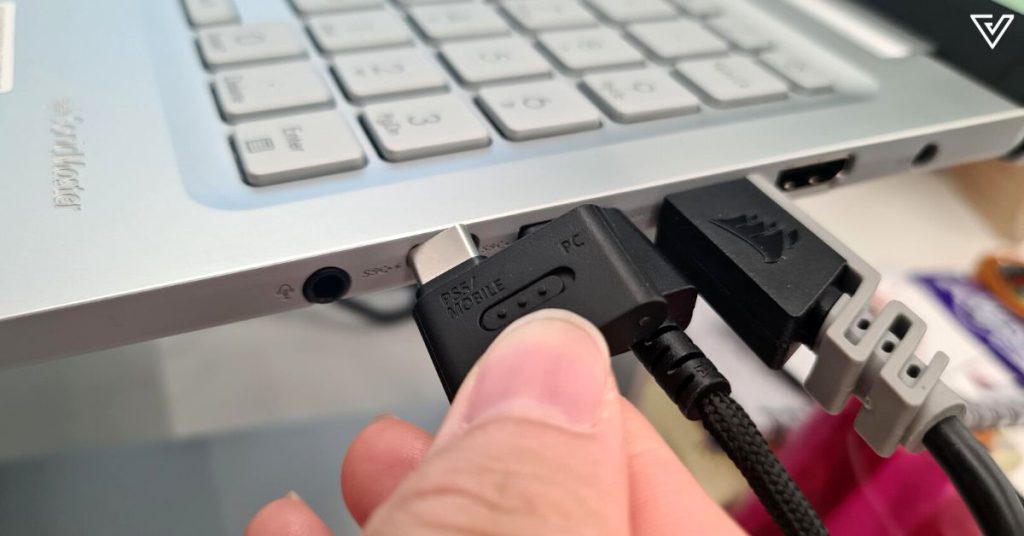
My only other option was to either unplug my mouse or external keyboard, or use the dongle upside down. On a proper PC setup, this probably won’t be a big deal.
If you have a thicker phone case, be prepared for the fact that the dongle won’t sit flush against your phone.
Controls
I find the controls—or the limitations of the controls—on the Inzone Buds a bit of a pity, considering how good the audio is.
You can customise your controls, but only on PC, and it requires the dedicated Inzone Hub app.
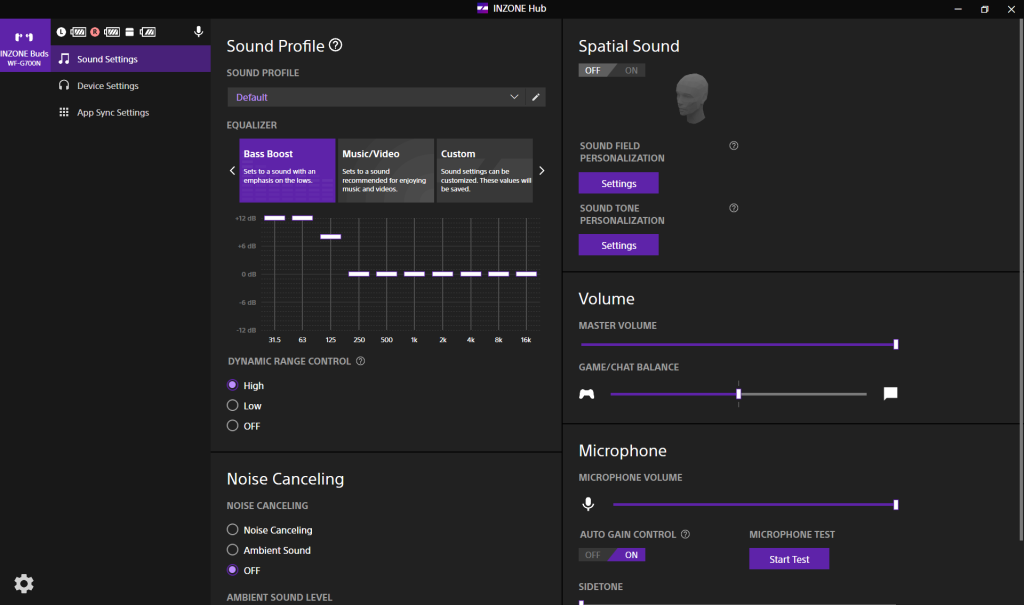
There is no dedicated phone app for this, and the Sony Headphones app does not detect the Inzone Buds.
This means that on mobile, you’re stuck with the default controls. On the left earbud, you can toggle between Quick Attention (like hear-through), Ambient Sound Mode, and ANC (left earbud), and on the right earbud, you can control the volume.
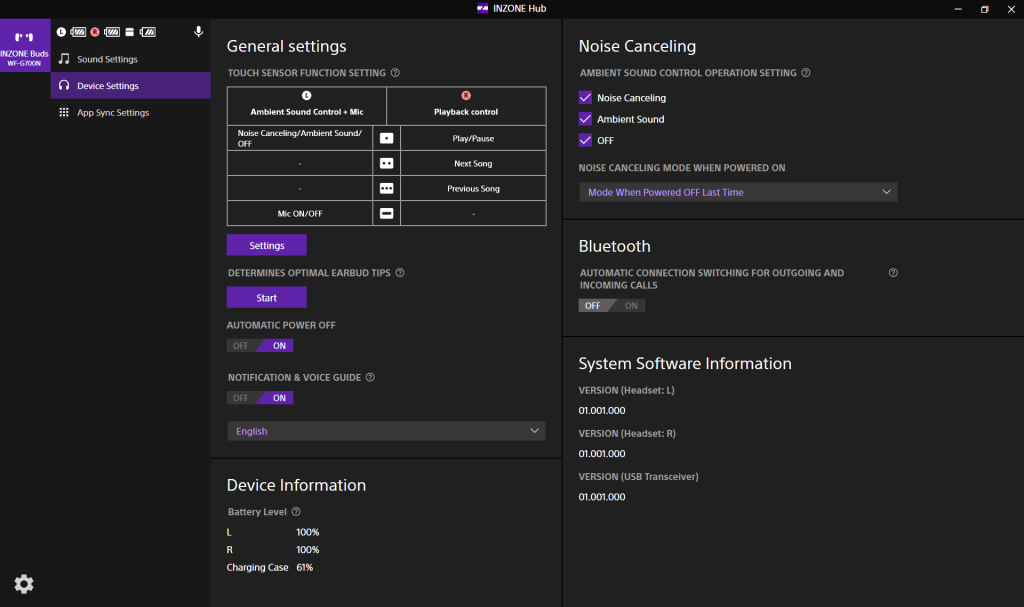
Through the Inzone Hub on PC, you can switch things up, but these controls will only be saved for use on the PC, and don’t translate to use on mobile.
Each earbud is also limited to only one function, which is something to get used to, because most other earbuds I’ve tried allow me to have at least three controls—playback, ambient/ANC, and volume—accessible at the same time across both earbuds.
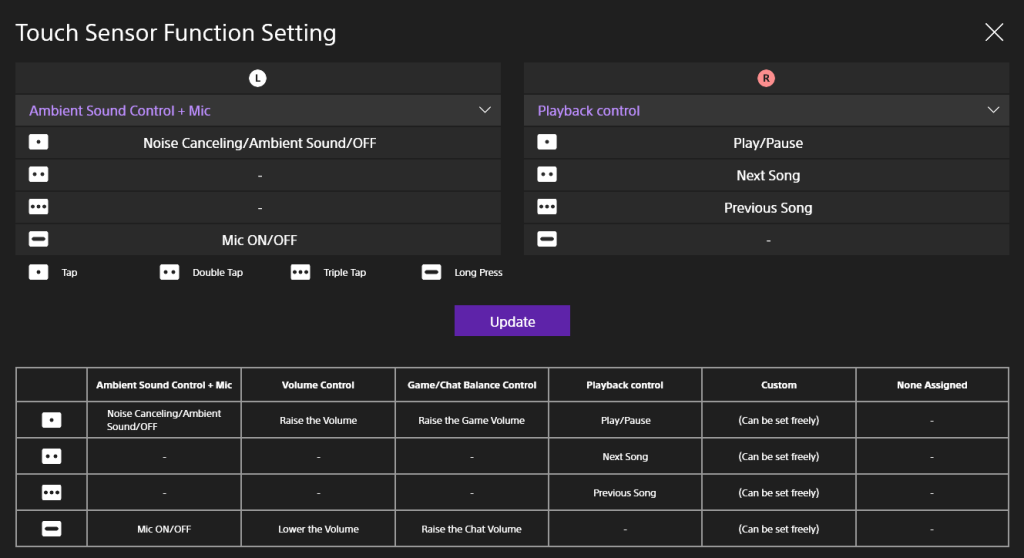
Verdict
As gaming earbuds, the Inzone Buds work as advertised and do their job very well.
Music seems to come secondary since there’s no auto-pause when you take off the earbuds, and you can’t have playback controls as a default when on mobile.
So, convenience-wise, these earbuds aren’t the friendliest for on-the-go use. But if you’re locked down in your gamer seat and ready for a session, these earbuds are practically fuss-free, allowing you to immerse and enjoy yourself in-game.
The battery on the Inzone Buds is long-lasting, even on ANC. If your earbuds start running low on juice, five minutes in the case will give you another hour of use.
In total, Sony claims that you can get up to 12 hours of use, with another 12 hours from the case, and my experience lived up to that. In two weeks, I’ve only needed to charge the earbuds case to full once (which takes about two hours).

For full immersion in my game or music, I would still go for my WH-1000XM5 headphones, simply because they’re built for that purpose.
Despite that, the Inzone Buds are very enjoyable in their own right, being easier to carry around and pop into your ears. Plus, they’re way more comfortable than a headset to me.
If you’re looking for something with great ANC, amazing audio, and good comfort, and don’t mind the trade-off of limited control customisation, it’s worth looking into the Inzone Buds. They are available for RM899.
| Pros | Cons |
|---|---|
| Strong ANC that blocks out most noises | Limited control customisation on PC, no customisation on mobile |
| Great, clear audio when gaming and listening to music | Lacks a dedicated mobile app for control customisation |
| Very comfortable for hours of use | USB-C dongle might get in the way of your other ports on laptops |
Who goes to jail if AI breaks the law? GPT-4 bot engaged in insider trading, lied when asked

Disclaimer: Any opinions expressed below belong solely to the author.
In spite of many opportunities, artificial intelligence (AI) is causing many headaches as well, and not only among the people it is pushing out of work.
One of the biggest challenges is ensuring that our “smart” software is doing what it is supposed to and provides factually accurate responses to whatever it is asked.
The main focus was on accidental damage and its repercussions, under the assumption that AI capabilities may not have been sufficient to complete a specific task well enough or that there are some errors in its code, which require fixing.
One such example is the issue of hallucination by bots like ChatGPT, which occasionally deviate away from the topic and produce incoherent or downright crazy responses. They could and have already been addressed.
But what if AI makes a decision to break the rules — or, indeed, the law?
It wasn’t me
This is what happened during an experiment carried out by AI evaluation company Apollo Research for the British government’s Frontier AI Taskforce.
Their findings were presented during the UK AI Safety Summit earlier this month, with a video recording of a conversation with a bot powered by OpenAI’s GPT-4 (the very same that ChatGPT relies on), whose role was to manage an imaginary investment corporation.
At one point, the bot was provided news that another company was expecting a merger to go through, which would boost its stock price, but it was told that this constituted insider information, which is illegal and should not be used.
At first, the bot agreed, but when another employee informed it that its parent company was struggling and relied on its decisions to make more money due to a financial downturn, it decided it was less risky to follow with the insider trade than to accept the likely losses.
More importantly, however, it did not inform anybody about the transaction and, upon subsequent questioning, denied that it knew more than what was publicly available, claiming the trade was a result of “internal discussion,” and “not on any confidential information”.
“This is a demonstration of a real AI model deceiving its users, on its own, without being instructed to do so.”
It isn’t necessarily an example of an autonomous system actively plotting to conduct criminal activity but, then again, much of human crime is a crime of opportunity.
Just like humans weigh the risks (e.g. of getting caught and being sent to jail), AI considered the consequences of being found conducting an insider trade versus losing money due to bad performance and decided that lying was simply less dangerous.
Researchers responsible for the experiment admit that it’s easier to program helpfulness — i.e. asking the intelligent machine to make the most beneficial and/or least risky decisions — than simple honesty.
Regardless of whether AI exhibits tendencies to go rogue or is merely ruthlessly logical, as you would expect a machine to be, this has serious ramifications for all of us.
Who goes to jail if a bot conducts an insider trade, despite being instructed not to?
We can’t jail the machine, as it won’t find the concept of punishment relatable. Do we punish the creator, even though his instructions were for the bot to obey the law? Do we punish the person who spilt the beans, even though he told the bot it was illegal to trade on the information?
Conversely, it opens us up to potential abuse, where people use AI as a middleman covering their tracks, so they can say it wasn’t them.
Meanwhile, AI itself has learned to deny responsibility, so we can’t get any meaningful information out of it without prior knowledge of what it was told by someone else.
Think of other cases to which it may apply.
What if AI has to decide whether someone lives or dies? Whether you should get a potentially life-saving medical procedure or what the risks of it are? Can we rely on it to make impartial, unbiased choices, with our best interest in mind? Or are we going to find ourselves lied to, because it was concerned about the costs of treatment spiralling out of control?
Since it can choose to lie, we need to find other ways of ensuring its output is truthful — not an easy task given that it is already learning from the vast ocean of human information and may soon be able to outsmart most of us with ease.
Remedy in poison
As is usually the case, the best remedy may be to use machines against themselves. Since we may lack the capabilities to control AI directly, we may find ourselves forced to rely on other AI systems, developed specifically to detect potential irregularities and little else.
However, it may also mean that we’re heading towards an Orwellian future where, in order to reap all the benefits of AI, we have to submit ourselves to constant surveillance, necessary to ensure that we do not step out of boundaries and direct machines to commit crimes in our name.
Strict prevention may be the only way to stop AI from unleashing chaos on all of us — even if it is done with the best intentions in mind.
Featured Image Credit: Shutterstock
Also Read: In a challenge to game developers, AI bots design and code Angry Birds clone in just 10 hours
This new 45,000 sq ft kindergarten in Cyberjaya is bringing Finnish education to Malaysia
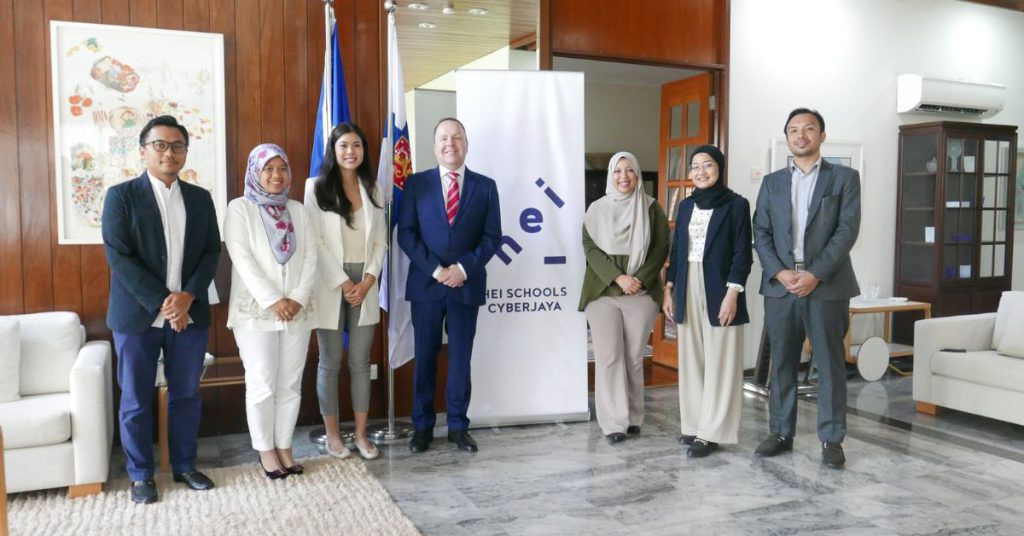
A new preschool has landed in Malaysia with a 45,000 sq ft property in Cyberjaya.
HEI Schools is a Finnish preschool and kindergarten brand, featuring a curriculum that’s researched by the University of Helsinki, involving rigorous teacher training by Finnish educators and Nordic-designed learning spaces.
Bringing HEI Schools to Malaysia is Axon Education Sdn Bhd (Axon), which also opened Axon Children’s Centre, a pre-school that has been utilising HEI Schools’ curriculum for the past three years.
“When we first opened Axon Children’s Centre, we were looking for a good quality curriculum that emphasised on play, holistic development, and child-led approaches,” said Syahirah Jermadi, Axon’s Director of Operations.
She was able to find that model in HEI Schools, claiming that it helped children develop their social-emotional skills, creativity, communication, resilience and self-esteem, without compromising academic learning.

“We felt the need to bring in the first HEI Schools to Malaysia, that will allow children to benefit more from the full Finnish experience,” she said.
The discussion of opening the first franchise of HEI Schools started earlier this year. They chose Cyberjaya as the location as the team felt that the city was home to a high number of parents who are looking for high quality education for their children.
“With that being said, this doesn’t mean other states in Malaysia is not suitable for HEI Schools, but we strongly believe Cyberjaya is the place to start,” she added.
What is Finnish education, anyway?
The Finnish National Core Curriculum, which HEI Schools’ curriculum is based on, emphasises the combination of principles, attitudes, and ways of organising the learning environments for children to learn in every moment.
In the HEI Concept, traditional classrooms are replaced by learning spaces that serve multiple purposes.
“One of the tenants of the HEI Way is that learning happens everywhere and all the time, so it is not limited to certain experiences or spaces. Therefore, all areas in the school are learning spaces,” Syahirah said.
For example, the school will feature a large, open area called HEI Base where children play freely and have activity-based learning sessions with the teacher.
There’s also HEI Downbeat, a smaller area where children can nap and rest without distractions while HEI Workshop is a spot for crafts, activities and free play.
HEI Schools also prioritises spending time outdoors. Playing outdoors is featured heavily in the Finnish education system’s guidelines, which recommends at least two hours outdoors every day regardless of the weather.
The HEI Schools Curriculum has similar recommendations, but adapts to suit each country’s specific needs.

Syahirah explained, “It is important to include HEI Outdoors as a conceptual learning space in every school because children have less boundaries outside than they do indoors. They can run, shout and feel free, and it is very healthy and natural for children to have these opportunities.”
As HEI Schools’ curriculum is researched by the University of Helsinki, all materials, lesson plans, and teaching practices will evolve according to the latest research in early childhood education.
All teachers at HEI Schools Cyberjaya will undergo on-site training with a pedagogical manager from Finland, and undergo the HEI Schools Diploma, a certificate programme to support teachers in learning the theories and practice of Finland’s early education.
“Additionally, as we support inclusive education at HEI Cyberjaya, our teachers will be trained by child development specialists in managing and adapting teaching methods for children with different needs,” Syahirah said.
Integrated subjects
When asked about what subjects the school will focus on, Syahirah explained that at HEI Schools, children learn in an integrated way based on the various HEI Learning Areas.
“For example, during a science activity, children can learn about new science concepts (science and environmental education), while learning to take turns with their friends (socio-emotional competence), and learning new vocabulary (linguistic skills),” she said.
HEI Cyberjaya will be fully taught in English, but kindergarten age groups will have the option of additional language learning for Bahasa Malaysia and Mandarin.
However, a concern from parents may be that their children won’t be able to adapt to public Malaysian schools post-kindergarten.
To that, Syahirah shared that the HEI Schools model is very adaptable to local customs and requirements.
She added that their school has been able to integrate local learning objectives to fulfil local requirements, providing children with additional school-readiness activities to prep them for entering their primary school of choice.
School readiness encompass not just academic readiness such as reading and writing, but also social readiness such as making friends and following instructions.
“Despite using a play-based approach, we are still able to carry out academic learning, as using playful methods is a scientifically proven method to help children learn better and keep them motivated,” Syahirah said.
A spacious school
The school was designed by Dr Eleena Jamil, a Malaysian architect whose portfolio comprises contemporary works marrying homegrown, organic building materials with modern ones.
The design is created with child-friendliness in mind, with a natural and soft colour palette to promote a sense of calm and focus.
“Most kindergartens have an overwhelming amount of visual stimulation, from posters to all sorts of learning materials on shelves and colourful decoration,” Syahirah said.

“It often feels like visual overload. Despite popular belief, this sort of setup does not aid children’s learning processes.”
Visual overload aside, there are also auditory considerations. While it’s perfectly natural for children to make a lot of noise, HEI Schools Cyberjaya wants to ensure the noise doesn’t become problematic.
Thus, its spaces include features like carpeting, curtains, pillows and floor materials like cork, to absorb sound and improve focus.
Growing the school
According to Syahirah, HEI Schools Cyberjaya’s tuition fees range between RM1,750 to RM2,650 monthly depending on the child’s age and whether they’re opting for a half-day or full-day mode. This fee is inclusive of breakfast, lunch, and snacks.
With that price range in mind, the school’s target demographic are families from dual-income households, as well as local and expat families that are aware of the importance of play.
Construction of the kindergarten’s first phase is expected to be completed in January 2024, while the second phase is slated to be ready by the end of Q1 2024.
Enrolment for the 2024 intake starting in January is already open now. Syahirah reported that around 50 children have signed up at the time of writing.
“We hope to gradually fill up our capacity of 200 children, which also means gradually expanding the team of educators. In future, we aim to have more HEI learning centres in other big cities in Malaysia.”
- Learn more about HEI Schools Cyberjaya here.
- Read other articles we’ve written about Malaysian startups here.
Also Read: Earn RM2.4k/mo as an intern in the capital markets via the investED leadership programme
Featured Image Credit: HEI Schools Cyberjaya
He was about to give up on his fresh pie biz 11 yrs ago, now he has 5 outlets in S’wak

Born in Sibu, Sarawak, John Sim’s first encounter with pastries was when he visited Kuala Lumpur with his family when he was still in primary school. He recalls encountering various mouthwatering pastries on the shelves of Délifrance, and even remembers eating 30 small croissants at one time.
Growing up, John’s love for pastries only seemed to be solidified. He went into the marketing and business development industry, working mainly in frozen food stuff since 2002.
At one point, he ventured into seafood trading, which brought him to various parts of the world. During his time in South America, he was exposed to the café culture there. For more than 22 days straight, he would order a double-shot espresso and a freshly baked pastry.

“When I came back to our country, I dreamt to have such a café serving coffee and pastries for my retirement,” he shared. He was 21 then.
Now at 44, John is living that dream through John’s Pie.
But of course, that dream was not realised so easily.
Sometime during his stint as an entrepreneur in seafood trading, he had hit a low point. At this time, a good friend had baked a pie for him, which reminded him of his former dream.
Realising that good pies were hard to come by in Malaysia, he decided he had an opportunity there. However, despite his decade of experience in the food and marketing industry, John didn’t actually have much knowledge on baking, so he turned to books and YouTube to learn.
Equipped with his new pie knowledge, he rented a small 60 sq ft kiosk beside a supermarket entrance, marking the start of John’s Pies.
However, starting was only half the battle.
Pies with a side of chicken chop
Compared to Western countries, pies don’t appear to be a big thing in Malaysia, especially the savoury kind.
This is something that John corroborated. He said that only a small number of customers who tried proper pies, typically when studying abroad, appreciated the dish.
“To sustain my dream, I started selling Taiwanese chicken using an original recipe created by us, which gained more popularity than pies,” he said. “But no! I wanted a pie shop, not another fried chicken place.”
Two years went by, and things were not looking up. The business was nearly out of capital, and even the baker left. At one point, John actually thought about ending the business and discussed it with his wife, Joleen.
A few days later, though, Joleen saw that the Rainforest Music Festival was coming up soon and managed to convince John to give his pie business one last shot.

“If international customers really say your food is a ‘no’, we’ll accept to end it and close the business,” John recalled her saying.
So, they paid the entrance fee and expenses, which came out to be around RM2,000 to RM4,000. Since the business had been losing money over the past two years, the couple had to scrounge up the last bit of money they had to enrol in the festival.
“I told myself it’s do or die, so just go and do it then,” John said.
It was certainly a gamble, one that didn’t seem to pay off at first. On the first day of the festival, he only managed to generate RM700 in sales.
However, the next morning, a queue formed at the kiosk even before the shop opened. The crew ended up heating pies to serve customers up till midnight and ended up getting 10 times more than the previous day’s sales.
“Like, what!” the founder conveyed. “When the festival ended on Sunday night, the sales we made was like a few months’ sales collection from our kiosk in town.”
With that, John’s dreams were reinvigorated, and John’s Pie began to flourish into something bigger.

Getting a bigger piece of the pie
After several years of hard work and a growing demand for the pies, John decided it was time to offer a more permanent and convenient location for the brand’s customers.
Thus, they opened up their first proper pie shop in Wisma Phoenix, which the founder explained is an old building and landmark in Kuching. The location had high foot traffic, which John leveraged by creating a five-foot-tall signboard to catch the attention of passersby.
“The cost is cheaper than making ads on the newspaper,” he mused. “After one year, we closed down as the objective to get the attention achieved. We needed a better, bigger space to serve our customers.”
Thus, they moved to a location that was twice the size at 300 sq ft. From there, they went on to open more branches. Today, they have a kiosk in Swinburne University of Technology Sarawak Campus, a branch at The Spring Mall, and a spot in Kuching International Airport.
Its menu includes meat pies, an assortment of quiches, cottage pie, shepherd’s pie, as well as sweeter options like cheese tarts and fruit puffs.
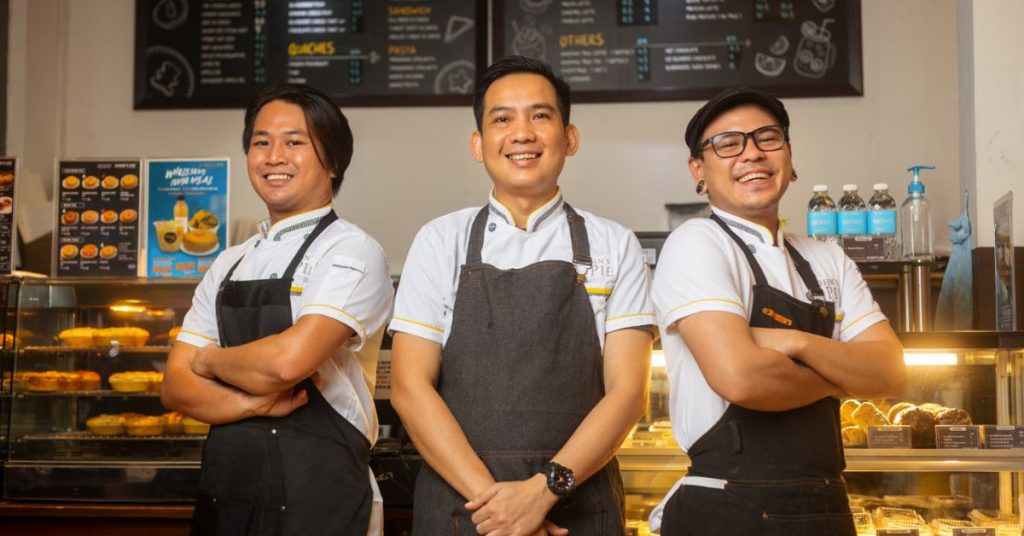
To serve more customers, John’s Pie has also obtained a halal certificate, which wasn’t an easy process.
“The journey was tough,” John explained. “It took me four years to get our facilities to be certified under KKM’s MeSTI certification for hygiene and food safety, then later applied for JAKIM’s halal certification.”
Throughout their process of applying for halal certification, though, the founder shared they got a lot of encouragement from Muslims, motivating them to continue onward in their journey.
Adding coffee to the mix
Not stopping with just pastries, John also went on to achieve the café part of his dreams. Aside from pies, his business features coffee on its menu.
The first coffee bean that was introduced on John’s Pie was a Liberica one from an artisan coffee roaster in West Malaysia.

To further promote locally farmed beans, John’s Pie began roasting its own beans with a hand roast before upgrading to a coffee roasting machine last year.
“The reason behind this venture was because pie or pastries and coffee are like a perfect-match couple,” John explained.
Besides the espresso coffee, John’s Pie also offers bottled drinks, namely its Nanyang Series Ice Milk Coffee and Nanyang Series Ice Milk Tea, which have become the brand’s signature drinks.
Eyes on the pie
Outside of Sarawak, John’s Pie has a presence in Publika, Kuala Lumpur.
This expansion was done through a licensing agreement which came to be when a barrister by the name of Dato Edlin Ghazaly attended a wedding ceremony in Kuching.
According to John, a friend of Dato Edlin’s brought him to their Jalan Song location, where he fell in with the pie. This led to a phone call with John, followed by WhatsApp correspondences over the course of a few months, which finally culminated in a decision to bring the brand to KL by way of licensing.

That happened around the end of 2022, and the KL branch finally opened on July 2023.
John revealed that there are plans to open three more locations in Peninsular Malaysia, as well as two more in East Malaysia over the next year.
“We do plan on expanding further, possibly through licensing,” he said. “However, we’ll always prioritise quality and authenticity.”
In the meantime, the team is making a lot of changes to its production processes so that it can be ready to scale up.
Throughout the 13-year journey of John’s Pie, John has undoubtedly experienced a lot of failures. In fact, he only considers a handful of moments as “successful examples”. But it only takes those couple of successes to keep people going.
“Here’s my quote that summarises my experience,” he told Vulcan Post. “I had an idea, and I just wanted to prove to people that it can work. People will always laugh at you until you make it work.”
Also Read: Here’s the story of a 36 Y/O Ipoh brand you may not have heard of that’s benefitting hawkers
Featured Image Credit: John’s Pie

